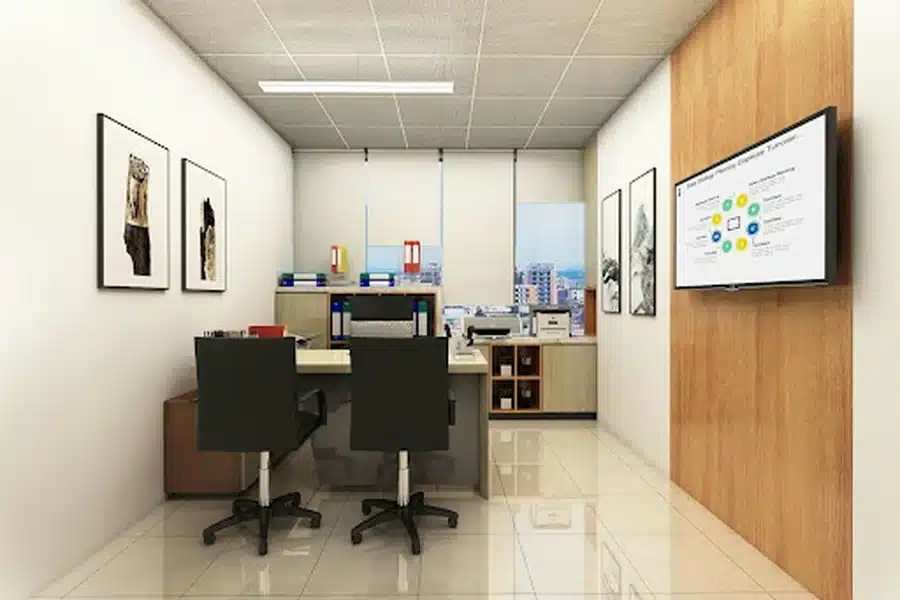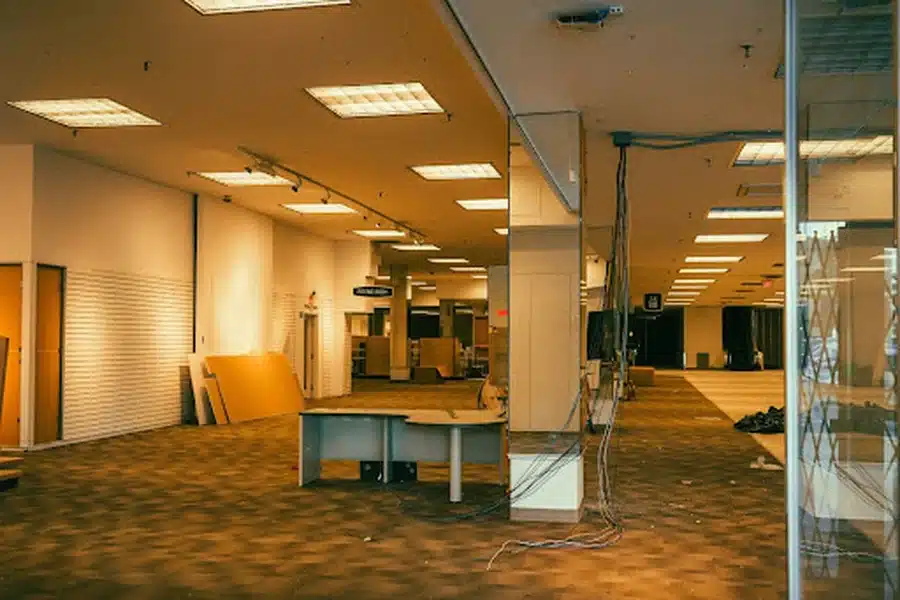The Hidden Costs of Traditional Office Leases: Why Flexible Workspaces Are Winning in 2026

The Australian commercial real estate landscape is undergoing a seismic shift as businesses increasingly question the true cost of traditional office leases. What once seemed like a straightforward calculation, rent per square meter multiplied by lease term, has revealed itself to be far more complex and expensive than most business leaders anticipated.
As we navigate through 2026, the hidden expenses of conventional office spaces are driving a mass exodus toward flexible workspace solutions.
The Sticker Price Is Just the Beginning
When businesses sign traditional office leases, they typically focus on the headline rent figure. This monthly or annual cost seems manageable when spread across budgets and financial projections. However, this base rent represents only a fraction of the total financial commitment required to maintain a functional office environment.
The reality is that traditional leases come bundled with a cascade of additional expenses that rarely appear in initial discussions. From fit-out costs that can exceed hundreds of thousands of dollars to ongoing maintenance fees and utility bills, the true cost of occupancy often doubles or even triples the advertised rent.
These hidden expenses can devastate cash flow projections and strain resources that growing businesses desperately need for core operations.
Modern businesses are discovering that flexible workspace solutions eliminate most of these hidden costs. The Work Project co-working space Sydney CBD offers all-inclusive pricing that covers everything from furniture and utilities to cleaning services and high-speed internet.
This transparent pricing model allows finance teams to accurately forecast expenses without worrying about surprise bills or unforeseen maintenance requirements.
Fit-Out Costs: The Six-Figure Surprise
Traditional office spaces typically come as empty shells requiring complete fit-outs before occupancy. Businesses must invest in partitioning, flooring, lighting, electrical installations, data cabling, kitchen facilities, and bathroom upgrades. For a mid-sized office of 200 square meters, fit-out costs commonly range from $150,000 to $400,000 depending on quality and specifications.
These upfront capital expenditures create immediate financial strain, especially for startups and growing companies that need to preserve cash for product development and market expansion.
The investment becomes even more problematic when businesses outgrow spaces or need to relocate, as fit-out costs are essentially sunk investments with minimal recovery value. Many companies find themselves trapped in unsuitable spaces simply because they’ve invested too heavily to justify moving.
The depreciation timeline for fit-out investments typically spans five to seven years, yet business needs often change far more rapidly. Teams expand faster than anticipated, business models pivot, or economic conditions shift. This mismatch between asset depreciation schedules and business reality creates accounting headaches and strategic inflexibility that hampers growth.
The Furniture and Equipment Trap
Beyond structural fit-outs, businesses must furnish entire offices with desks, chairs, meeting tables, storage solutions, breakout furniture, and reception areas. Quality commercial furniture isn’t cheap; ergonomic desk chairs alone can cost $800 to $1,500 per seat, and conference room tables with proper audiovisual integration can exceed $20,000. A 20-person office can easily require $100,000 in furniture expenditure.
Equipment costs compound the financial burden significantly. Businesses need high-capacity printers, video conferencing systems, security installations, kitchen appliances, and storage solutions. These items require upfront capital, ongoing maintenance contracts, and eventual replacement as technology advances or equipment fails.
Technology infrastructure represents another substantial investment category. Businesses must install server rooms or communications closets, purchase networking equipment, implement security systems, and establish backup power solutions. These installations require specialist contractors and ongoing IT support, adding thousands of dollars in monthly operational expenses.
Utilities and Services: The Monthly Drain
Electricity bills for commercial offices can shock business owners, particularly in climate-controlled tower buildings where HVAC systems run constantly. A typical 200-square-meter office in Sydney’s CBD can incur $2,000 to $4,000 monthly in electricity costs alone. These expenses fluctuate with usage, seasons, and energy market conditions, making accurate budgeting difficult.
Internet and telecommunications infrastructure require dedicated business-grade connections that cost significantly more than residential services. High-speed business internet with guaranteed bandwidth and service level agreements typically runs $500 to $1,500 monthly, depending on capacity requirements.
Phone systems, whether traditional or VoIP-based, add another $100 to $300 per user annually when including hardware, licensing, and maintenance.
Cleaning services, waste management, and general maintenance create ongoing operational expenses that accumulate relentlessly. Commercial cleaning for a 200-square-meter space costs approximately $1,200 to $2,000 monthly. Waste removal, pest control, and general maintenance add another $500 to $1,000 monthly, not including reactive repairs when things break.
The Long-Term Commitment Risk

Traditional commercial leases typically require three to five-year minimum commitments, with many landlords preferring five to ten-year terms. This long-term obligation becomes problematic in uncertain economic conditions or rapidly evolving business environments. Companies locked into expensive leases during downturns continue paying for space they don’t need, while growing businesses struggle in spaces they’ve outgrown.
Personal guarantees frequently accompany commercial leases, putting directors’ personal assets at risk if businesses fail to meet lease obligations. This risk exposure extends beyond the business itself, potentially jeopardizing personal homes and savings. For entrepreneurs and startup founders, this personal liability can be devastating if business conditions deteriorate.
Make-good clauses in traditional leases require tenants to restore spaces to their original condition upon departure. These restoration costs often match or exceed initial fit-out expenses, creating a double financial penalty. Businesses essentially pay twice, once to customize the space and again to undo those customizations while receiving zero value from either expense.
Underutilized Space Costs
Most traditional offices experience significant utilization inefficiency, with research showing that conventional office spaces sit empty 40-60% of the time. Businesses pay full rent for spaces that remain unused during evenings, weekends, public holidays, and when staff work remotely. This inefficiency represents massive financial waste that directly impacts profitability.
Meeting rooms present particularly acute underutilization challenges. Businesses often provision multiple conference rooms to accommodate peak demand, yet these rooms sit empty most days. The square meterage dedicated to occasional meetings could accommodate productive workstations or be eliminated, but traditional lease structures make downsizing difficult.
Hot-desking and activity-based working models can improve utilization in traditional offices, but implementing these approaches requires additional investment in technology, change management, and redesigned workflows. Many businesses lack the resources or expertise to optimize their traditional office spaces effectively, resulting in continued waste.
Maintenance and Repairs: The Ongoing Burden

Building maintenance responsibilities in traditional leases often fall partially or fully on tenants. HVAC system servicing, plumbing repairs, electrical maintenance, and general wear-and-tear all require attention and funding. Unexpected breakdowns can cost thousands of dollars while simultaneously disrupting business operations.
Landlords typically pass through operating expense increases to tenants through annual adjustments. These escalations can add 3-5% to occupancy costs annually, compounding over lease terms. Businesses must budget not only for current expenses but also anticipate escalating costs throughout their lease duration.
Compliance requirements add another layer of expense and complexity. Fire safety inspections, electrical testing, air quality monitoring, and accessibility upgrades all require regular attention and investment. Failure to maintain compliance can result in fines, liability exposure, and potential lease termination.
The Flexibility Advantage
Flexible workspace providers absorb all these hidden costs within their membership fees, offering businesses predictable monthly expenses without capital requirements. This all-inclusive approach covers rent, utilities, furniture, equipment, cleaning, maintenance, and even amenities like barista-quality coffee and wellness facilities. Finance teams can forecast expenses accurately without surprise bills.
Month-to-month or short-term agreements allow businesses to scale up or down as needs change without lengthy notice periods or lease break penalties. Growing companies can add desks seamlessly, while businesses facing headwinds can reduce commitments quickly.
This flexibility provides breathing room during uncertain times and enables aggressive growth when opportunities arise.
Premium locations become accessible to businesses of all sizes through flexible workspace models. Startups and small companies can establish prestigious CBD addresses without the astronomical costs of traditional leases. This location flexibility opens doors to better talent acquisition, enhanced client perceptions, and improved business development opportunities.
Real-World Financial Comparison
Consider a hypothetical 20-person company comparing traditional office space versus flexible workspace in Sydney’s CBD. A traditional 200-square-meter office might rent for $120,000 annually, but the total cost tells a different story.
When adding fit-out amortization ($50,000 annually over three years), furniture depreciation ($15,000 annually), utilities ($30,000 annually), cleaning and maintenance ($20,000 annually), internet and phones ($15,000 annually), and miscellaneous expenses ($10,000 annually), the true annual cost reaches $260,000.
In contrast, flexible workspace membership for 20 dedicated desks might cost $180,000 to $200,000 annually, all-inclusive. The difference of $60,000 to $80,000 annually represents a 23-31% cost saving while providing superior amenities, better flexibility, and zero capital requirements. These savings compound over time and can be redirected to revenue-generating activities.
The break-even analysis becomes even more favorable when considering capital preservation and opportunity costs. The $200,000 in upfront capital required for traditional office fit-out and furniture could generate significant returns if invested in marketing, product development, or talent acquisition instead. This opportunity cost rarely appears in traditional financial analyses but significantly impacts business growth trajectories.
Strategic Implications for 2026 and Beyond
The shift toward flexible workspaces reflects broader changes in how businesses think about real estate and workplace strategy. Companies increasingly view office space as a service rather than an asset, prioritizing flexibility and experience over ownership and control. This philosophical shift aligns with the subscription economy model that has transformed software, transportation, and numerous other industries.
Hybrid work models have permanently altered space requirements and utilization patterns. Businesses no longer need permanent desks for every employee when staff split time between office and remote work. Flexible workspace arrangements accommodate hybrid models naturally, allowing companies to right-size their commitments based on actual utilization rather than theoretical capacity.
Talent attraction and retention considerations increasingly favor premium workspace experiences over basic office functionality. Modern workers expect high-quality environments, convenient amenities, and collaborative spaces that inspire productivity. Flexible workspace providers invest heavily in creating these experiences, while traditional office tenants must fund workplace improvements independently.
Making the Switch: Practical Considerations
Businesses contemplating the shift from traditional to flexible workspace should start by auditing true occupancy costs comprehensively. This exercise often reveals hidden expenses that decision-makers hadn’t fully appreciated. Armed with accurate cost data, leadership teams can make informed comparisons against flexible alternatives.
Tour multiple flexible workspace providers to understand the range of options, pricing models, and amenity offerings available. Not all flexible workspaces are created equal; some cater to enterprise clients with dedicated suites, while others focus on freelancers and startups with open-plan arrangements. Finding the right fit requires evaluating multiple options.
Consider transitioning gradually if current lease obligations prevent immediate switching. Many businesses maintain traditional leases while establishing flexible workspace memberships for overflow capacity, meeting spaces, or regional offices. This hybrid approach provides immediate cost savings and flexibility while honoring existing commitments.
Conclusion
The hidden costs of traditional office leases have become increasingly apparent as businesses scrutinize every line item in their budgets. Fit-out expenses, furniture investments, utility bills, maintenance costs, and inflexible long-term commitments create financial burdens that far exceed headline rent figures. These hidden expenses can consume resources that growing businesses desperately need for core operations.
Flexible workspace solutions eliminate most hidden costs while providing superior amenities, strategic flexibility, and predictable expenses. As businesses navigate economic uncertainty and evolving work models, the value proposition of flexible workspaces continues to strengthen. The workspace revolution isn’t coming it’s already here, and businesses that adapt quickly will gain significant competitive advantages.
In 2026, the question is no longer whether flexible workspaces make financial sense, but rather how quickly businesses can transition away from the hidden cost trap of traditional office leases. For companies serious about optimizing real estate expenses and preserving capital for growth, the answer is increasingly clear: flexibility wins.
